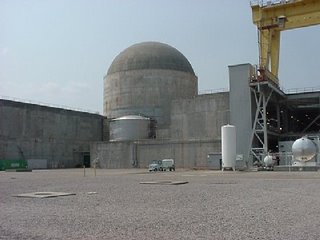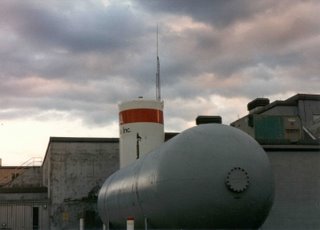Types of Neu Industrial


Gun-triggered Fission Bomb
The simplest way to bring the subcritical masses together is to make a gun that fires one mass into the other. A sphere of U-235 is made around the neutron generator and a small bullet of U-235 is removed. The bullet is placed at the one end of a long tube with explosives behind it, while the sphere is placed at the other end. A barometric-pressure sensor determines the appropriate altitude for detonation and triggers the following sequence of events:
1. The explosives fire and propel the bullet down the barrel.
2. The bullet strikes the sphere and generator, initiating the fission reaction.
3. The fission reaction begins.
4. The bomb explodes.
Little Boy was this type of bomb and had a 14.5-kiloton yield (equal to 14,500 tons of TNT) with an efficiency of about 1.5 percent. That is, 1.5 percent of the material was fissioned before the explosion carried the material away.
Implosion-Triggered Fission Bomb
Early in the Manhattan Project, the secret U.S. program to develop the atomic bomb, scientists working on the project recognized that compressing the subcritical masses together into a sphere by implosion might be a good way to make a supercritical mass. There were several problems with this idea, particularly how to control and direct the shock wave uniformly across the sphere. But the Manhattan Project team solved the problems. The implosion device consisted of a sphere of uranium-235 (tamper) and a plutonium-239 core surrounded by high explosives. When the bomb was detonated, this is what happened:
* The explosives fired, creating a shock wave.
* The shock wave compressed the core.
* The fission reaction began.
* The bomb exploded.
Comments